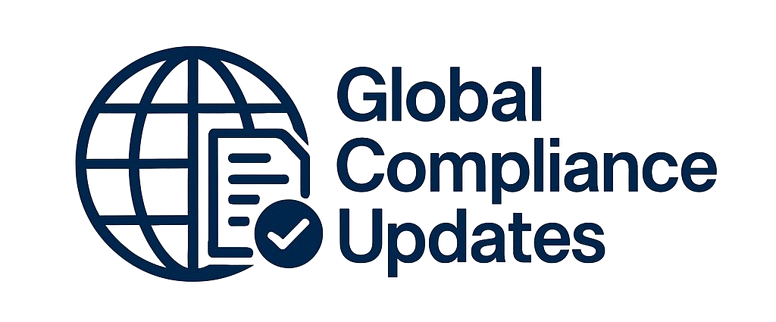This course will provide a thorough review of regulatory guidelines on method validation and transfer. It provides guidance on how to perform QC analytical test method validations and transfers.
WHY SHOULD YOU ATTEND?
This course provides guidance on how to perform QC analytical test method validations and transfers. One of the most critical factors in developing and marketing pharmaceutical drug substances and drug products is ensuring that the analytical methods used for analysis can generate valid data upon which business and regulatory decisions can be made. FDA, ICH and USP have each recognized the importance of this relative to the drug development process and have each expanded method validation requirements in recent years. However, with only limited guidance, industry has been left to interpret how to adequately comply with the regulations. This course provides a comprehensive overview of the international regulatory authority requirements and expectations for test method validation of these assays. This course will prepare attendees with the knowledge and tools to plan and execute test method validation packages for the NDA, BLA and MAA market application dossiers, covering in-process, release and stability assays commonly used by QC.
Whether involved in method development, method validation, method verification or method transfer, this course will provide a broad understanding and “hands-on” knowledge of the method validation process and the difficulties encountered in validating methods to comply with today’s upgraded FDA CDER requirements. Lectures will include some of the more common mathematical and statistical treatments of validation data. Because of the tremendous effort that can be expended in conducting validation studies, efficiency of experimental design and documentation will be stressed throughout the discussions. Methods utilized for the analysis of pharmaceuticals generate critical data in the determination of a product’s safety, identity, strength, purity, and quality. It is essential that the quality of the data is assured. Validation is required to demonstrate that these analytical methods are fit for their intended use. The validation data is also required by regulatory agencies for submissions.
This course will provide a thorough review of regulatory guidelines on method validation and transfer. Each element required to have a complete and thorough method validation will be discussed in detail to ensure course attendees have a clear understanding of each requirement.
A review of validation protocol requirements and selection of appropriate acceptance criteria will also occur during the webinar session; as well as, a discussion on how to select suitable statistical calculations for reporting and interpreting the data.
LEARNING OBJECTIVES
Topic 1: Regulatory Requirements/Guidance on
- This course will provide a thorough review of regulatory guidelines on method validation and transfer. Each element required to have a complete and thorough method validation will be discussed in detail to ensure course attendees have a clear understanding of each requirement.
- Terminology defined: qualification, validation, revalidation, and verification
- FDA, EMA, ICH requirements and guidance
- Validation lifecycle for analytical methods
Topic 2: Analytical Method Pre-Validation – Stage 1
- Analytical Target Profile (ATP)
- ICH Q8, Q9, and Q10 adherence - Pre-Validation Requirements
- QC instrumentation qualification
- Training
- Critical essay reagent qualification
Topic 3: Analytical Method Validation Characteristics – Stage 2
- Specificity, accuracy, precision, linearity, range
- LOD and LOQ
- Robustness and stability-indicating
- Value of system suitability controls
Topic 4: Test Method Validation Protocol
- Elements of a validation protocol
- Pre-planning and planning steps
- Identification and documentation of assay characteristics needing to be validated
- The critical importance of assigning pre-defined acceptance criteria
Topic 5: Test Method Validation Report
- Elements of the validation report
- Elements of the validation protocol and the associated final validation report
- Meeting the pre-defined acceptance criteria
- Handling deviations/OSs, when (not if) they happen
Topic 6: Regulatory Concerns About Test Method Validations
- Validation issues identified during the review of the submitted market dossier
- Validation issues identified during regulatory inspections
- Test method validation “continuous improvement” – ICH Q10
WHO WILL BENEFIT?
- Analytical Development
- Quality Assurance
- Quality Control
- Validation
- Regulatory Affairs
This course provides guidance on how to perform QC analytical test method validations and transfers. One of the most critical factors in developing and marketing pharmaceutical drug substances and drug products is ensuring that the analytical methods used for analysis can generate valid data upon which business and regulatory decisions can be made. FDA, ICH and USP have each recognized the importance of this relative to the drug development process and have each expanded method validation requirements in recent years. However, with only limited guidance, industry has been left to interpret how to adequately comply with the regulations. This course provides a comprehensive overview of the international regulatory authority requirements and expectations for test method validation of these assays. This course will prepare attendees with the knowledge and tools to plan and execute test method validation packages for the NDA, BLA and MAA market application dossiers, covering in-process, release and stability assays commonly used by QC.
Whether involved in method development, method validation, method verification or method transfer, this course will provide a broad understanding and “hands-on” knowledge of the method validation process and the difficulties encountered in validating methods to comply with today’s upgraded FDA CDER requirements. Lectures will include some of the more common mathematical and statistical treatments of validation data. Because of the tremendous effort that can be expended in conducting validation studies, efficiency of experimental design and documentation will be stressed throughout the discussions. Methods utilized for the analysis of pharmaceuticals generate critical data in the determination of a product’s safety, identity, strength, purity, and quality. It is essential that the quality of the data is assured. Validation is required to demonstrate that these analytical methods are fit for their intended use. The validation data is also required by regulatory agencies for submissions.
This course will provide a thorough review of regulatory guidelines on method validation and transfer. Each element required to have a complete and thorough method validation will be discussed in detail to ensure course attendees have a clear understanding of each requirement.
A review of validation protocol requirements and selection of appropriate acceptance criteria will also occur during the webinar session; as well as, a discussion on how to select suitable statistical calculations for reporting and interpreting the data.
Topic 1: Regulatory Requirements/Guidance on
- This course will provide a thorough review of regulatory guidelines on method validation and transfer. Each element required to have a complete and thorough method validation will be discussed in detail to ensure course attendees have a clear understanding of each requirement.
- Terminology defined: qualification, validation, revalidation, and verification
- FDA, EMA, ICH requirements and guidance
- Validation lifecycle for analytical methods
Topic 2: Analytical Method Pre-Validation – Stage 1
- Analytical Target Profile (ATP)
- ICH Q8, Q9, and Q10 adherence - Pre-Validation Requirements
- QC instrumentation qualification
- Training
- Critical essay reagent qualification
Topic 3: Analytical Method Validation Characteristics – Stage 2
- Specificity, accuracy, precision, linearity, range
- LOD and LOQ
- Robustness and stability-indicating
- Value of system suitability controls
Topic 4: Test Method Validation Protocol
- Elements of a validation protocol
- Pre-planning and planning steps
- Identification and documentation of assay characteristics needing to be validated
- The critical importance of assigning pre-defined acceptance criteria
Topic 5: Test Method Validation Report
- Elements of the validation report
- Elements of the validation protocol and the associated final validation report
- Meeting the pre-defined acceptance criteria
- Handling deviations/OSs, when (not if) they happen
Topic 6: Regulatory Concerns About Test Method Validations
- Validation issues identified during the review of the submitted market dossier
- Validation issues identified during regulatory inspections
- Test method validation “continuous improvement” – ICH Q10
- Analytical Development
- Quality Assurance
- Quality Control
- Validation
- Regulatory Affairs
Speaker Profile
 Kelly Thomas
Kelly Thomas
Ms. Thomas has over two decades of cGMP hands-on industry experience in both pharmaceutical and medical device manufacturing operations. Her experience covers all Quality Systems; as well as, all areas of validation; including, process/product validation, facilities validation, CSV and 21 CFR Part 11, test method validation, equipment/automated processes and cleaning validation.Utilizing strategic thinking, risk based approaches, and Lean principles, she has demonstrated success in steering and managing complex projects within the pharmaceutical and medical device industries.
Upcoming Webinars

ChatGPT and Project Management: Leveraging AI for Project M…

Workplace Investigations 101: How to Conduct your Investiga…

Project Management for administrative professionals

The Monte Carlo Simulations in Excel for Risky Investments

Onboarding is NOT Orientation - How to Improve the New Empl…

Dealing With Difficult People: At Work & In Life

Transform Data into Insights: A Beginners Guide to Excel Pi…

Construction Lending And Real Credit Administration: Evalua…

Understanding Accounting for non - Accounting professionals

Harassment, Bullying, Gossip, Confrontational and Disruptiv…

New Form 1099 Reporting Requirements: 2025 Compliance Update

Human Error Reduction Techniques for Floor Supervisors

HR Metrics and Analytics 2025 - Update on Strategic Plannin…

Treating Employees Like Adults: Discipline versus Empowerme…

7 Ways To Beat Burnout: Without Quitting Your Job


How to Write Procedures to Avoid Human Errors

Handbook Overhaul 2026: Compliance, OBBB Act & Beyond

FDA Proposes Framework to Advance Credibility of AI Models

Ethical Terminations: Navigating Employee Exits with Legal …

Understanding EBITDA – Definition, Formula & Calculation

Project Management for Non-Project Managers - Scheduling yo…

4-Hour Virtual Seminar on Hidden Secrets of Selling & Marke…

Validation Statistics for Non-Statisticians

Data Integrity and Privacy: Compliance with 21 CFR Part 11,…


The Alphabet Soup: When the FMLA, ADA, COBRA, and Workers' …

Talent Management: How to Leverage AI and ChatGPT Tools for…


Offboarding with Care: Conducting Legal & Ethical Employee …

2-Hour Virtual Seminar on How to Conduct an Internal Harass…

Payments Fraud Detect & Prevent Check, ACH and P-Card Schem…

Managing Toxic & Other Employees Who have Attitude Issues



Reduce Stress in the Workplace: Effective Ways to Handle Co…





Excel - Pivot Tables - The Key To Modern Data Analysis and …
